-
Can you hear termites in the walls?
March 29, 2022
Can you hear termites in the walls? If you hear any clicking, buzzing or tapping sounds in the wall, you…
Table of Contents
Can you hear termites in the walls? If you hear any clicking, buzzing or tapping sounds in the wall, you may be facing a potential termite invasion. Termites are hard to spot and often go unnoticed, causing significant amounts of damage in homes each year. They commonly make unusual clicking sounds to communicate within their colony and depending on the size of the infestation, you might hear them chewing through wood.
To help you determine if you’re dealing with a termite issue, we’ve answered all your common questions about termite noises. If you notice any of these sounds, it’s critical you contact Pest Aid for professional pest control immediately.
What are termites?
Termites are a type of insect that forage on wood cellulose, a type of substance found in wood. They have a small body type, with a set of transparent white wings. They range from white to light brown in colour and are often mistaken for ants.
Considering their diet, home-owners commonly detect signs of termites in their house. The signs include: mud trails around the house, wood chips, clicking sounds and wings lying around the house. However, termites can also go undetected, until it’s too late and the damage has begun.
So, can you hear termites in the walls? You sure can. We’ve outlined some of the common noises below.
Can you hear termites in the walls?
Besides seeing fallen wings, mud tubes, and worst of all, hollowed wood, you can also tell if termites have infested your home through termite sounds. Termites usually produce sounds as they go about their day-to-day activities.
The sounds termites make are faint and rarely heard. You are likely to hear the sounds at night when there is total silence indoors. The sounds come from the termites chewing on or moving through wood. In the case of a minor termite infestation, the sound is weak, meaning you have to pay more attention to hear it. The larger the infestation, the louder the sound produced and more havoc caused.
What do termites sound like in the walls?
Termites make a wide range of sounds, so we’ve listed them below so you can keep an ear out. If you can hear termites in the wall, call the Pest Aid team as soon as possible.
Head banging
Head banging against the wall is the strongest and loudest sound made by termites. Rattling and fast-paced, the sound is produced when termites get threatened or sense a food source and try to communicate with each other.
The sound is more pronounced when soldier termites bang their jaws and heads or shake their bodies against the tunnel in wood. They do so to alert all the others of imminent danger. The headbanging creates vibrations that ripple through the entire colony.
Termites are deaf, so they recognise these vibrations through their bodies.
Buzzing
Termites also produce a faint humming sound that is not as clear as the hum of bees and wasps.
Hollow sounds
Termites eat a lot of wood in floors and walls, leaving empty spaces that produce a hollow sound when tapped. The dull, hollow sound indicates that termites have already caused severe damage. When termites chew away at a hardwood floor, it becomes weaker with time, making the floor creak loudly in certain areas.
Clicking
As termites feed on wood, a unique clicking sound comes from the wood cavity. Termites also make clicking or rustling sounds with their mouths when tunnelling through wood.
Tapping
A tapping sound from the wall can be attributed to termites too. The faint rattling or tapping in the wall occurs as termites bang their heads.
Swarming
During spring, termites make swarming sounds as they move. The sound is produced by their wings when flying.
Is termite noise constant?
Termites feed and work around the clock. They do not sleep, so expect to hear continuous sounds. Termite noises can be heard anytime but are more detectable during the night when the house is quiet.
Termites also make sounds when they get threatened or disturbed. They alarm each other about looming danger by banging their heads against the wall. The banging creates a louder sound that is easier for humans to hear. Additionally, termites produce sounds as they fly around or move through wood.
Do termites make a crunching sound?
Termites chew non-stop. As worker termites tunnel through a wooden structure, you may hear a soft crunching sound. The sound is less intense than that of headbanging.
Pest Aid is here to help
If you notice any signs of termites in your walls, you must act fast and contact a professional pest control service today. Luckily, Pest Aid is here to help with all your pest control concerns. With over 25 years of experience in termite pest control, we have the latest eco-friendly technology to protect your home.
If control isn’t taken, termites can build nests and tunnels in hard-to-reach areas. Within a short time, termites can cause immeasurable damage to your property, costing you hundreds to thousands in bills. To avoid this, we recommend booking a termite inspection to activate your termite protection plan now.
People also read:
-
Everything You Need To Know About Baby Termites
March 18, 2022
Termites are a nightmare for any homeowner, often causing thousands of dollars in damage each year. As adults, the signs…
Table of Contents
Termites are a nightmare for any homeowner, often causing thousands of dollars in damage each year. As adults, the signs of termites are pretty clear. But what about baby termites? What do they look like and do they cause any damage? To help you spot them, we’ve rounded up and answered all your common questions below. And if you’ve discovered baby termites in your home, contact the Pest Aid termite pest control team today.
What do baby termites look like?
Baby termites look similar to adult termites. The only significant difference is that they are paler in colour and smaller in size, resembling tiny ants. They feature straight antennae, a thick waist and have a tell-tale whitish pigment. As termite babies develop, they get darker and larger. Seeing these tiny termites on your property signals a potential termite infestation.
The lifecycle of baby termites
A baby termite comes to life with the hatching of an egg. Egg production starts slowly and increases rapidly with time. Laid eggs are white in colour and will hatch usually into termite nymphs. Once hatched, a termite baby moves to a nursery chamber where it is fed and groomed.
It takes several months for a termite nymph to grow fully. The growth period is determined by several factors like temperature, food availability, and the population of the colony. With fewer young termites, growing up becomes easier and faster because there is less competition for resources.
As much as baby termites may not wreak havoc on your home, they can and will when they’re fully grown. Knowing the early signs of a termite infestation is critical in keeping your property free of termite damage. That’s why we recommend performing regular termite inspections so you can spot the problem early on. Working with a proficient pest control company is always the surest way to safeguard your property from termite babies.
What do baby termites eat?
Baby termites are unable to feed themselves, so they must get fed by worker termites. Worker termites venture out and consume wood cellulose and secret a fluid that is then fed to their babies. Once fully grown, babies that turn into queen or king termites will continue to eat the secreted wood cellulose, however others will begin to eat wood from the source.
How do you get rid of baby termites?
Eliminating termites in their baby phase before they mature is the most effective way of dealing with a termite infestation. And here is how to do so:
1. Apply Nematodes
Nematodes are roundworms that kill termites. The worms have gut bacteria, making them an excellent natural insecticide. When a nematode enters a baby termite’s body, it poisons the host’s blood, killing it. Nematodes are readily available in gardening stores and safe for plants, pets, and humans. Once released, nematodes breed and continue to grow in number, keeping termites at bay. Expect positive results within three days of application.
Though there are multiple ways of using beneficial nematodes, the easiest method involves mixing the nematodes in water and spraying the mixture on termite-infested areas once a day using a spray bottle. The water seeps into the wood, spreading the nematodes right where the termites are. Before using nematodes, check if they are explicitly made for termite control as there are different types of nematodes.
2. DIY methods
Once you exterminate the adults, you will have gotten rid of termite babies as well. For simple do-it-yourself termite control, use homemade repellents such as vinegar and orange oil. An even better approach is using store-bought options, including boric acid, perimeter barriers, and diatomaceous earth.
3. Call the professionals
Pest control companies effectively manage young termites on properties. They detect, eliminate and prevent termite infestations using tested and proved procedures and products. Their vast experience gives them an edge over do-it-yourselfers in combating nasty creatures like termites.
Found baby termites in your home?
Termites cause stress for many homeowners, that’s why pest control companies are here to help! At Pest Aid, we have over 25 years of experience in the termite control industry with the latest technology. Pest Aid provides affordable and eco-friendly solutions that are safe for your home and family. And once we have successfully eliminated colonies, we conduct regular routine monitoring to ensure your house is safe.
People also read:
-
What Time Of Year Are Termites Most Active?
March 1, 2022
Termites can be dangerous to your home, so it’s incredibly important you’re aware of the early warning signs. This includes…
Table of Contents
Termites can be dangerous to your home, so it’s incredibly important you’re aware of the early warning signs. This includes knowing whether or not termites are seasonal. To help, we’ve answered the question, “what time of year are termites most active?” below. And if you have any other questions, please don’t hesitate to get in touch with our expert termite control team.
What time of year are termites most active?
Unfortunately, termites are active year round. While weather changes can affect when termites colonies form, you can’t slow them down once they establish an infestation. So, if you want to protect your home from termites, you need to seek professional pest control advice right away.
A professional termite extermination company will let you know if you have a termite infestation. If there is one, they will start the termite control process and advise you on future prevention methods
Are termites seasonal?
So while the answer to “what time of year are termites most active?” is “all year round, the weather can slightly impact their behaviours. For instance, some species prefer a little more moisture compared to others.
Most dry wood termites, especially subterranean termites, swarm during spring. Then in the summer, damp wood termites are more prevalent. But several species can also swarm simultaneously depending on the weather conditions.
Termites in spring
Since most termites swarm in summer and spring, you should be able to notice signs of termite infestation quickly. During summer, the termites’ activities involve foraging and eating. These seasonal conditions cause the death of many termite workers resulting in a reduction in the workforce. However, the secondary queen steps up and produces plenty of eggs to increase the number of workers.
Termites in winter
Do termites die in the winter? No, they don’t. Missing signs of infestation in the winter does not mean that the termites are dead. The ideal temperature for termites is 23°C, and in winter, the temperatures fall between (2°-10°C).
Regardless of the temperature change, termites need food to survive. During these winter months, they dig deeper underground where temperatures are warmer. They will be hard to find, but they are still active even in the winter.
Termites in autumn
Are termites active in autumn? There’s one southern subterranean species that chooses to swarm in this season from August to November. The winged adults of this species are pale brown and often invade in the late morning. They easily get confused with ants because of their colour and size.
How long does it take for termites to appear?
The combination of an open crack or a damp pipe with fresh wood is the perfect entryway for termites to infest your home. Termite colonies consist of hundreds to thousands. Just within a few days, termites can multiply their colony and infest different areas of your house, causing significant amounts of damage. That’s why it’s crucial you take preventative measures and book an inspection with a professional pest aid service when you suspect any infestations in your house.
How do you know if termites are active?
There are some tell-tale signs of a termite infestation in a house. Below are some of the signs that termites are active in your property:
- Discarded termite wings in and around your property
- Mud tubes around the floor joist, foundation, and support beams
- New damages in walls
- Rotting wood around your property and bugs in the soil
Learn more: signs of termites
What time of year is best for termite treatment?
Since termites can infest your home year round, any time is the best! If you suspect any termite damage or simply want to keep on top of potential pest invasions, we recommend getting a termite inspection.
Pest Aid is here to help
So now you know the answer to the question, “what time of year are termites most active?”, you may be wondering what you can do about it. That’s why we recommend contacting a professional pest control service.
Pest Aid have been helping Australian home owners with pest control for over 25 years. With the latest technology and eco-friendly approved products, we will effectively protect your home against termites. Book a termite inspection with Pest Aid online now.
People also read:
-
What Noise Does A Rat Make?
October 26, 2021
Have you heard any strange noises coming from the roof? Or noticed any rat dropping on the floor? This may…
Table of Contents
Have you heard any strange noises coming from the roof? Or noticed any rat dropping on the floor? This may be the sign of a rat invasion. And while rats tend to be louder than you might think, it can be hard to recognise them at times.
So you may be wondering, ‘what noise does a rat make?’. Read on to learn how you can identify wild rat noises. If you have any other enquiries, please contact our rodent control team today.
What noise does a rat make?
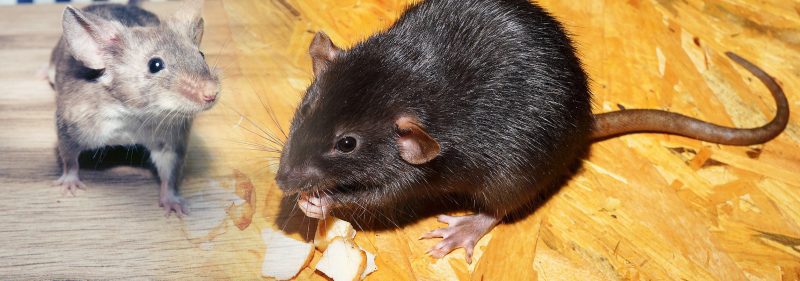
Rats are quiet animals, but can be heard as they scavenge for food at night. This is often one of the first signs of a rat infestation in your home. So if you hear any of the below noises, you may have a rat problem:
- Scurrying: This is one of the most common sounds you will hear from a rat. This indicates a rodent is moving from one area of the house to another.
- Gnawing: Rats will often gnaw their front teeth on floor joists, siding, and electric cables and this gnawing and chattering sound can be heard indoors. They also brush into walls, which is often misidentified by homeowners as larger bugs.
- Hissing: Rats can make hissing noises if they’re in distress or need to warn other rats of a threat. Squeaking will also occur when rats communicate with one another.

What can I do if I have rats in my home?
Rats not only infest homes and cause significant damage, but they can also carry diseases that are harmful towards people. As rat colonies grow larger, removing them from your home can be challenging. That’s why we recommend following the below steps to get rid of a rat infestation:
Inspect your home
If you suspect you have unwelcome guests, the best place to start is by doing a full home inspection. Check for any rat droppings inside or outside the house. Also, look for any signs of damage or dirty foot tracks. Try to take note of the areas they are coming from, so you can locate where they may be nesting.
Seal any cracks
Whilst inspecting your home, you may have noticed some unsealed cracks, which are the perfect entry point for rodents. Make sure you use some sealant and seal all cracks inside or outside the house to prevent anymore pests from invading your home.
Clean your home
One of the best defences against rats is maintaining a clean home. Rats love shelter and cluttered spaces as it’s easier for them to locate a hiding place. Make sure you clean all the clutter from inside and outside your home, especially away from any walls. You should also keep all food sources in air-tight containers, keep all bins closed and ensure all your pipes are cleaned.
Use rat traps
Trapping is one of the most effective ways to eliminate rats effectively. You can set rat traps in the most populated areas of your house, or contact pest control professionals.
Getting rid of rats can be very time consuming and may not be effective without the proper treatment plan. That’s why you should turn to a professional pest control company. If you suspect rats and mice in your home, do not hesitate to book a treatment now. A rodent control company will help keep rodents away from your property by removing the rats using a number of methods.
Pest Aid are here to help
So now you know the answer to, ‘what noise does a rat make?’, you know what sounds to listen out for! And if you fear you may have a rodent infestation, Pest Aid are here to help you out! We have over 25 years of experience in the pest control industry and use all the latest technology. Pest Aid provides eco-friendly and affordable solutions that are safe for your family and home. Contact us online today for a pest treatment.
Learn more: Environmental Policy
What noise does a rat make? FAQS
Do rats make noise at night?
Rats are nocturnal animals, so you’ll often hear them during the night. Rats will make chattering, squeaking, scattering and hissing sounds to communicate to others in their colony. Rats like to move around the same areas, which is why you will hear these sounds in one area of your home.
Does one rat mean an infestation?
If you notice one rat in your home, there are most likely more to accompany it. Rats are social animals and live in colonies. If you notice them during the day this usually signifies that their population is overgrowing – meaning you must get rodent control immediately.
People also read:
-
How To Tell If Noise In Roof Is From Rat Or Possum
October 19, 2021
One of the signs that draw the attention of homeowners to the presence of unwanted guests in the form of…
Table of Contents
One of the signs that draw the attention of homeowners to the presence of unwanted guests in the form of rodents and other pests is noticeable noise in the roof of their homes. These rodents are usually rats and mice, or possums which are not rodents but marsupials.
When possums and rats infest a home, there are usually tell-tale signs of their presence. Apart from the noise they make, other signs include chewed out cables, movement of downlights as a result of the weights of animals sitting on top of the light fixtures, and even the mark of urine on the ceiling.
Background Information On Rats And Possums
These two animals belong to two different groups of mammals and it isn’t difficult to tell one from the other. They are different in several ways including colouration, morphological features, and various other biological aspects that make comparing them interesting.
Interesting facts about rats
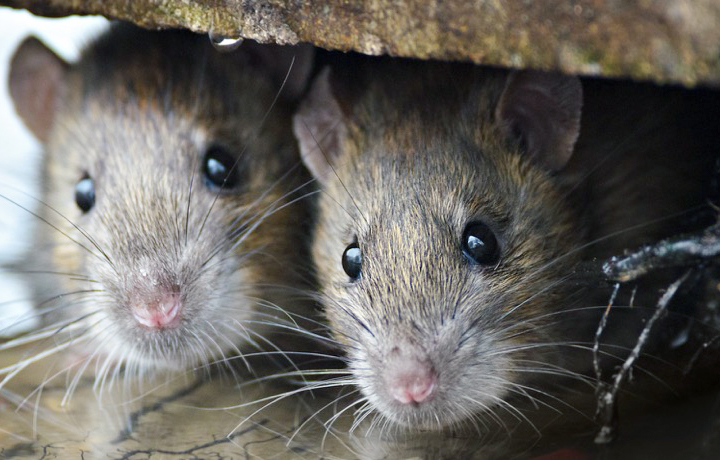
Rats are rodents with medium-sized bodies. They are larger than mice and have skinny long hairless tails. Male and female rats are referred to as buck and doe respectively. Apart from the fact that they are serious pests to humans, they are also capable of transmitting various pathogenic organisms, but some people keep them as pets.
Rats are omnivores, which makes them qualified to eat just about anything you can eat and even those you would normally not eat. Different breeds of rats have been shown to have different colours including white, grey, black, and ash.
Interesting facts about possums
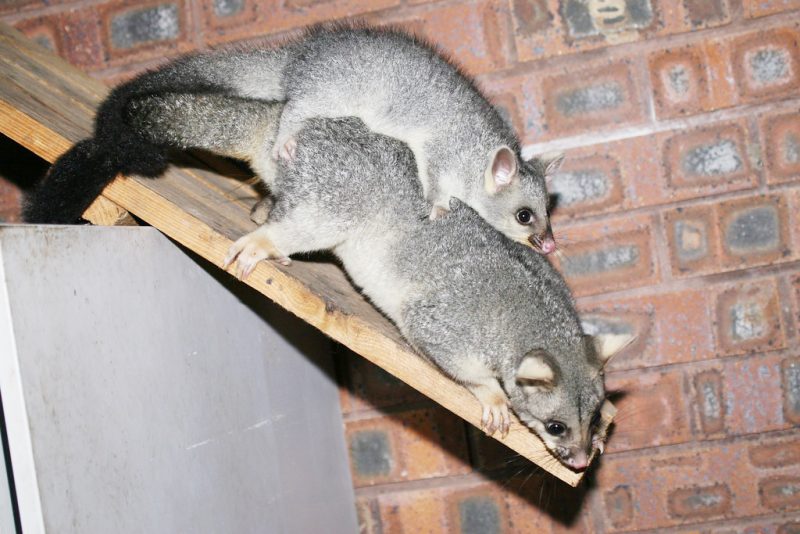
Possums have small to medium-sized bodies and are classified as marsupials. They are native to Australia as well as to the surrounding islands known as Oceania. There are over 70 different species of possums that are found on different continents in the world.
These animals are nocturnal, meaning they are more active at night. They are also excellent tree climbers. Possums are herbivores and as such will eat foods like fruits, vegetables, young shoots, and flowers. They can show some adaptations for predatory behaviours in which case they can become opportunistic omnivores.
These animals come in different colours such as black, ash white top with yellow beneath. They are known to possess bushy black tails.
How To Differentiate Between Rats And Possums
All the signs and damages mentioned previously can be caused by either possums or rats and these may not be enough to tell the difference between them. Despite this, there are few characteristic differences in the damages caused by these animals and they are what rat control and possum control experts use sometimes to identify the kind of animal pests that have infested a house.
The urine stains possums leave behind
Possums normally sleep in one place, which can cause a hole through plasterboard. These rodents are known to excrete a significant amount of urine capable of staining a huge area of your ceiling. With some experience, the distinctive smell that comes as a result of this may be easily recognized.
On the other hand, rats move around all the time unless they are nesting. You will find rat droppings scattered everywhere on a roof but possum droppings are usually in small clusters around the spots they sleep.
The difference in weight between rats and possums
Possums weigh at least 4 kilograms. The huge weight is the reason possums make significant sounds when they move around especially at night and at the break of dawn each morning as they go back to their hideouts.
Rats make noises which may occur when they are excited, or leaping from one spot to another within the roof space. You may even hear loud thuds at times as the rats land on the ceiling and scamper around. The disturbance is louder in roof spaces that do not have insulation.
Their response to the presence of people
Another way you may differentiate between these two animals is how they respond to the presence of the homeowner or humans. Rats are secretive and will make noise when there is quietness in the house but as soon as there is a sound from the homeowner, rats will stop for a while before they go back to making noise. However, possums will resume chewing or making their noise only a few minutes after hearing of the presence of the homeowner.
You can use the apple test
If you are bothered and would want to know whether what you have in your home are rats or possums, there is a small test you can conduct. It is called the “Apple Test” and it involves placing an apple somewhere in your ceiling where you have confirmed these animals visit.
If by morning, it is gone or most of it has been consumed, the probable visitors you have in your home are possums. If, however, the apple is only gnawed at and there are tell-tale signs of lots of teeth marks, what you have are rats or mice.
You can use thermal imaging to differentiate
A professional approach towards differentiating between these animals may be carried out through thermal imaging. It is not expected that a typical homeowner will have access to this technology but since it can be very effective, it is worth a try. It is perhaps the easiest and fastest means of detecting and identifying these animals when they are present on your rooftops.
Reasons Why Baiting Is Not A Good Idea
There are different approaches people use to get rid of rats and possums. Perhaps the most common approach used is baiting due to its convenience. Possums are protected by Australia’s laws and cannot be killed but removed to another location.
Where death occurs through baiting, poisoning, or some natural means, the stench that follows if the dead animals are not removed on time can make life unbearable for the homeowner. The dead animals are usually not easy to trace when this happens and this can cause the odour to linger for a long time.
The length of time the odour lingers will depend on several factors such as the time of the year. During summer or when there is warmer weather, the offensive smell can prevail for a longer time whereas, during the winter period, the roof does not heat up as much as you would expect during summer. The odour of a dead possum can linger around in a roof for six to eight weeks while that of a rat takes up to four weeks.
How To Get Rid Of Roof Rats And Possums
Once rats and possums make their way into the roof space of your house, it may not be an easy task to chase out these unwelcome visitors unless you consult with residential pest control specialists.
There are basic steps that are involved in the exercise of forcing these rodents out of your house roof including confirming their presence through signs of roof infestation, conducting an inspection on attics and roofs, and the execution of a removal plan.
Do not leave your pet’s food outside
You may have realized already that when your pet does not eat its meal in one, it is a sure invitation for rats and possums to come. These animals will come around to steal the meal so you have to do everything possible to prevent this from happening. One sure step you may take is to store the leftover food in a covered container, and bring it inside the house with you.
Block all entry points
Leaving entryways free only makes roof infestation by rats and possums easier. You can make it harder for these rodents to gain access to your house and roof by sealing up all access points. This eventually discourages these animals and makes them look elsewhere.
Trim branches that are close to your roof
Rodents will look for any means to gain access to your house roof and one of the ways they may do this could be from branches leaning close to the roof of your house.
You should consider trimming or removing completely tree limbs that have stretched within 8-10 feet of the roof. This is to prevent these rodents from accessing the roof of your home from these branches.
Dispose of your garbage properly
Leaving food leftovers and waste lying around will keep the rats and possums coming back. All these need to end in the trash can. It is also important to ensure that you use tight-fitting lids to cover up the trash cans otherwise, the rodents will come in and get close to your home which is something you want to avoid.
Keep the outside of your home clean
You should make sure to keep the bushes and shrubs outside of your home close to the ground. When you do this, it will not be possible for anything to hide underneath it. If you need firewood for your fireplace for example, you should stack them at least a foot off the ground and never allow any form of bush piles in your yard. The reason is, they are the perfect breeding grounds for rodents.
Keep the garage and shed tidy
If you have a garden, you don’t want to leave plant seeds and fertilizers in the open. These should be stored in containers and properly sealed because they can serve as viable food sources for rats and possums. You should keep the firewood out of your shed or garage because this is a potential nesting site for rodents.
Get a specialist to come for inspection
If you believe there are rats or possums in your home or you have seen them as they scurry along, invite pest controllers to come to your aid. These are the people who will check for signs of the presence of these rodents and they are better equipped to know the best approach to use to get rid of them.
Contact A Licensed Pest Control Specialist
Rats and possums can cause damage and also spread diseases within a home. This is why you cannot sit back and watch as these animals take over the your roof. The first few steps to take are all those already highlighted above. These will ensure that these pests do not turn your home into their breeding place.
If you have tried everything and still require possum and rat help, the next best thing you can do is to call on experts such as Pest Aid to help you out in both Adelaide and Gold Coast. A licensed pest controller can save you from extensive damage which could mean loss of money that can be caused by possums, rats, and mice.
-
What Smell Do Rats Hate?
October 19, 2021
Rats are said to be quite emphatic and smart creatures, but unwelcome visitors in the house, because of their destructive…
Table of Contents
Rats are said to be quite emphatic and smart creatures, but unwelcome visitors in the house, because of their destructive nature. They have several abilities that make them thrive well wherever they find themselves such as being skilled in swimming, hiking, and jumping.
Perhaps the most important ability they possess is their sense of smell with which they can find their way to food. Smart as these pests are, there are some methods you can easily apply to get rid of them based on the smells they like or detest. Here are a few simple tactics you can use to deter rats and the damages they cause in your home.
Why Get Rid Of Rats?
Rats are no doubt interesting creatures but this does not mean you would want to keep them in your house for any length of time. The reason for this is simple, if you give them an inch, they will grab a yard. Rats are highly destructive pests and will chew their way through wire cables, fabrics, foods, or any other useful material in the house.
Besides this, they pose great health risks because they transmit several types of diseases. This is the reason you have to look through different pest control options and find what works best to get rid of rats in your house.
What Are The Things That Attract Rats?
Getting rid of rats may not be an easy task because they are hardy rodents. They are capable of thriving under different climates and conditions. This hardiness is also seen in the way they eat. They can feed on different types of things including human food and even those things such as garbage that humans will not feed on.
Rats will frequent places where they can get a constant supply of food and you should understand how easy this is for them with their strong sense of smell. The first step you want to take in rat prevention in your home is making sure to avoid those things that get rats attracted to your home in the first place.
Tips To Avoid The Smells That Attract Rats
Ensure that garbage bins are closed
The look and smell of decaying groceries and leftover food may be gross to you but this is exactly what rats need to keep coming back. The waste disposal unit may not be coming every day but you can keep the bad smell out hence the rats by ensuring that the garbage bins are closed properly.
Seal up cracks and holes
Rats are small animals and you will forever wonder how they managed to come inside your house if all doors and windows are shut tight. Rats can squeeze themselves through small holes, gaps, and cracks in the house, especially if they are bigger than one-quarter of an inch. As long as you still have these entry points, getting the doors and windows closed might not keep them out.
Maintain a clean environment
You will need to ensure that you maintain a clean environment and do away with piles of materials near your houses such as bricks, vegetation, firewood, or any other form of cluster of materials. These can easily serve as a haven that rats need to breed and eventually extend their territories into your home.
Can Odours Be Used To Repel Rats?
Several types of pest control methods have been introduced for getting rid of rats but only a few of them are effective in keeping these small pests away from homes. One interesting fact we know of is that a lot of people cannot differentiate between rats and mice. Rats are bigger and while cats may easily scare away mice, the story may change with rats.
Rats rely heavily on their sense of smell which they use in finding food and communicating with other rats around them. Since rats perceive smells and odours a lot, this ability may be used against them in producing a rat repellent. Scientific evidence lends support to this fact although realistically, effective prevention of rat infestation using this approach is often debated.
Here is the list of the top items whose smells are believed to keep rats away:
- Mothballs
- Garlic
- Peppermint oil
You may have heard as well about the use of one or more of these items but it is about time you learnt the truth on whether these materials can give off odours strong enough to ward off rats.
Can Mothballs Be Effectively Used To Fight Off Rats?
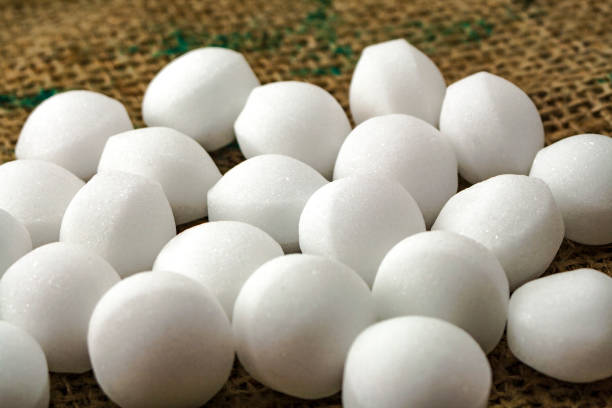
The effectiveness of mothballs as a means of rat control is doubted but many people to this day swear by this method. The primary reason mothballs are used as a rat prevention method is that they contain an active ingredient known as naphthalene. With this active ingredient, mothballs have been used to discourage the proliferation of fabric pests such as silverfish or moths. While this may have worked in this manner, it looks unrealistic to believe it will do the same with rats.
Several people believe that placing some balls or grains of mothballs at the entry points of rats or in their nest will be enough to get rid of them. However, what we know is that the amount of naphthalene in mothballs will never be enough to effectively keep rats away. Rats are smart and if they find the smell of mothballs worrisome, rest assured that they will seek out another route or access road.
Garlic Should Work Against Rats, Even Vampires Detest It

Garlic is one of the simple home remedies suggested for curbing the menace of a rat infestation in the home. Many people have found out that garlic is quite effective in controlling pests like flies and mosquitoes. However, it is not clear yet whether you can rely on it to help you keep a rat infestation out as no proof is available that it is effective at keeping rodents out of your home.
Garlic is well known for its strong aroma and this may make it seem like a great rat deterrent. There is no scientific evidence to back up the claim of rats being affected by the smell of garlic. Another thing is, if for any reason rats find the odour coming from an area offensive, if the area provides them the food they want, they are bound to return as soon as they become used to the pungent smell.
The Peppery Smell Of Peppermint Oil Should Do The Trick

If you believed it when you were told that rats dislike the smell of peppermint, you couldn’t have been more wrong. Your house may smell a lot better with peppermint oil spray but that does not mean it will make rats hate coming around your house for dinner.
It is believed that peppermint oil has a strong smell that keeps rats away from homes when used in high concentration, and this should be capable of distracting the keen sense of smell of rats easily.
You should bear in mind that rats are capable of surviving in places with more terrible smells such as stinky sewage for example. It becomes impractical therefore to make such places smell of peppermint oil. As soon as the peppermint oil disappears, these pesky critters are bound to make a return.
Which Is The Best Way To Keep Rats Away?
Most home remedies for getting rid of rats are appealing because they appear easy and are affordable. However, where there is a serious rat infestation, they do not provide a permanent or long-term solution to the problem.
More than any other thing as far as repelling rats is concerned, prevention stands as the best remedy. This should not be too difficult for you to do if you can follow these steps:
Regular maintenance of your home
If you would love to keep rats out of your domain, one of the best ways you can get this done is by making regular repairs to any form of damage that may have occurred in the exterior and interior sections of your house. This way, you get to seal up any crack or hole that may provide easy access to rats to gain entry into your home.
Keep your house clean
Maintaining a clean house is highly essential and needed to keep rats at bay. This is because rats get attracted by poor sanitary conditions. With their good sense of smell, rats can find their way to where there are decaying organic material because such is seen as food for them. By keeping waste in sealed containers and properly discarding food, your home will be less attractive to these pests.
Find A Pest Control Expert
Where there is neither the time nor the knowledge of how issues may be handled with a serious rat infestation, the next best thing you can do is to find a pest control expert such as Pest Aid. Such people will take the trouble off your hands and get the job done as quickly as possible.
-
Australian Animals In Your Roof At Night
October 3, 2021
You may be tempted to think that your house is haunted if every day in the dead of night you…
Table of Contents
You may be tempted to think that your house is haunted if every day in the dead of night you hear noises in your roof. The strange sounds coming from your roof every night are not from ghosts but rather an indication that a wild animal has found a home up there.
Wild animals are a beautiful component of the environment and are even protected by stringent laws. Unfortunately, these animals sometimes become a nuisance when they invade our homes, forcing us to eliminate or repel them.
The roof usually provides a safe haven for animals because we give little attention to what happens there. Most wild animals that find their way into our roof cavities and spaces tend to be nocturnal, meaning they are most active at night. But, would we be fine living with wild animals in our roof spaces if they never made the noises that interrupt our sleep when we need it most? Well, maybe that would be the case if living with wild animals in our homes had no other associated problems beyond just noise.
Regrettably, these animals are dangerous pests capable of damaging our homes by causing fire and transmitting deadly diseases to us. You should not therefore ignore the presence of these pests in your home.
As soon as you identify signs that indicate their presence, contact trusted pest management companies in your locality for inspection and control. It is important that your hire experts who are authorised by law to provide professional pest solutions that secure your home from these wild animals without causing harm to them.
Before you call pest or wildlife control professionals to your home to inspect the source of noise in your roof, it is important to have an idea of what the animal could be. This article provides information on animals that are likely to live in roofs in Australia including:
- How to tell when pests have invaded your roof
- How wild animals access your roof
- Structural and health problems associated with having wild animals in your roof
- Wild animal diseases that can be transmitted to you when they live in your roof
- How to get rid of pest animals from your roof
- How to identify the pest that has invaded your home
- Professional commercial and residential pest control services in Adelaide
How Do I Tell That Pest Animals Have Made A Home In My Roof
It is always long after the wild animals have colonised our roofs that we become aware of their presence. This is because we pay little attention to the roof and we hardly notice any strange activities up there until it is manifested as unpleasant noises that interrupt our night sleep. How then do you tell signs of animals in your roof before it is too late?
Here is a brief checklist that can help you tell that pest animals have made a home in your roof:
- When you hear hissing, crawling or scratching sounds in your walls or roof space it is an indication that a wild animal may be living in your home
- Signs of chewing on your soffit, siding or gutter
- Animal droppings
- Stained ceilings and walls, usually from urine and droppings
- Animal odours
- Feathers and hairs
If you observe any or a combination of the above signs, you definitely have a wild animal problem in your home or property. This is the time to contact wildlife control professionals who understand where and what to look for.
Native Animals That Are Most Likely To Live In Your Roof Cavity
In Australia, roof cavities and voids provide conducive environments for rats and mice, possums and pest birds to live in. This is because most of their natural habitats have been cleared for development and farming.
Rats and Mice
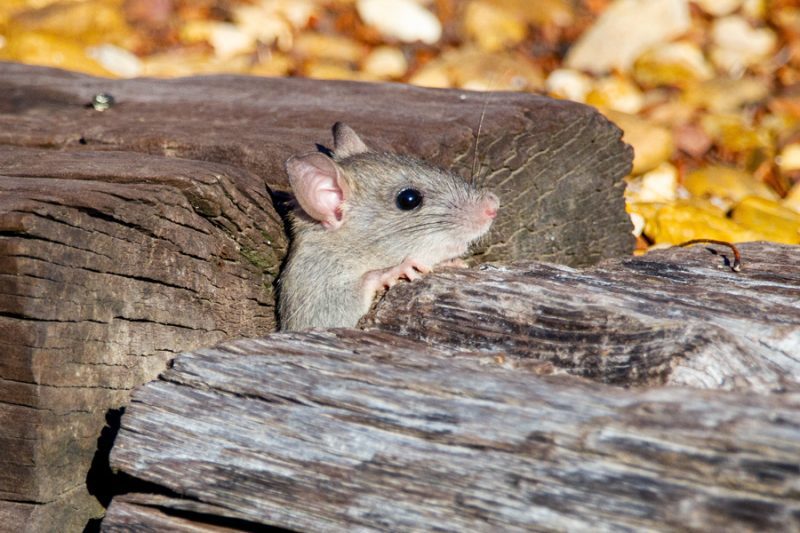
Rats and mice are a big problem in Australia since their introduction by European settlers. They have the ability to climb high up the building and access the roof.
Possums
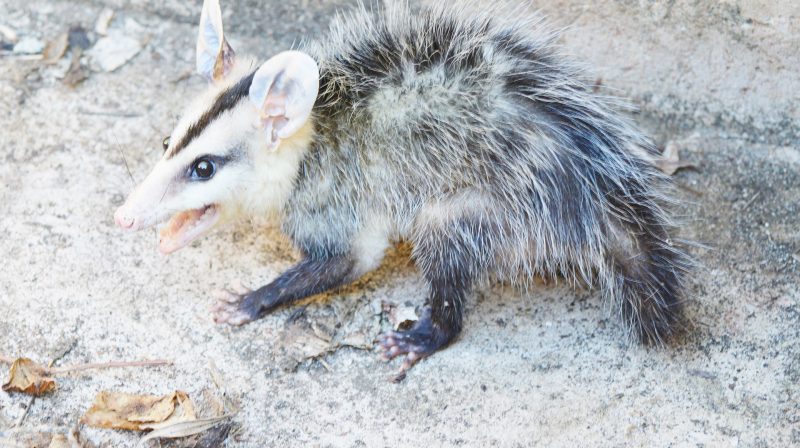
Possums are native to Australia and even though they are tree dwelling animals, they are a common pest found in roofs. Approximately 23 known possum species live in Australia. Species of possum that you are likely to find in your roof include: brushtail possums and ringtail possums.
Naturally, possums will sleep in tree hollows or high up on trees. But because tree hollows take long to form on trees and a few that are existing have been cleared to pave way for development, possums find it convenient to nest in roofs.
Pest Birds
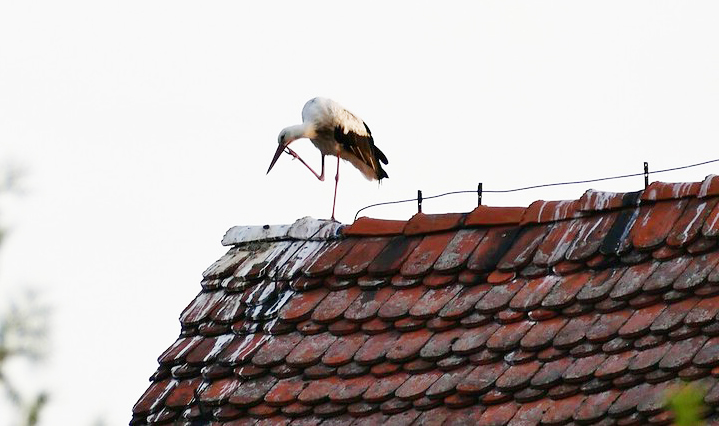
Common pest birds that are most likely to live in your roof in Australia include: pigeons, seagulls, house sparrows, starlings, and Indian mynas. Some of these birds nest in large numbers and can cause a serious problem when they infest your property.
How Do Wild Animals Access And Live In The Roof?
Most of the wild animals found in our roofs are either good climbers or have the ability to fly as well as squeeze through small gaps. Ventilation gaps provide convenient entry points for these animals.
Rats and mice, for example, are good climbers and can access the roof by climbing vertical walls, hanging tree branches and thin cables or wires. Due to their flexible body and soft skeleton, they are also able to squeeze through narrow gaps and access the roof.
Roof spaces and cavities provide entry points for possums into our roofs where they establish their nests.
Pest birds mostly enter the roof through damaged areas where mortar has cracked and fallen off. Damaged roofing can also provide entry point to the roof spaces for birds.
Problems Of Having Animals Living In Your Roof
Your safety and that of your home is compromised by the presence of wild animals in your roof.
- The unpleasant noises in the roof from these animals make our homes uncomfortable especially at night since our sleep is interrupted.
- Animal droppings and urine stain our ceilings and walls thereby defacing our properties.
- Possums and rodents like rats and mice chew through wire insulation. This is a safety hazard as it exposes electrical wires increasing chances of short circuiting and fire.
- The unpleasant and irritating pungent odours from animal droppings and urine creates discomfort at home.
- When these animals trap themselves in the roof cavities or wall spaces, they end up dying and decomposing. The smell that comes from decaying rats, possums, and birds is terrible.
- Presence of animals in your roof attracts other bugs and pests likes mites and fleas.
- Wild animals carry zoonotic diseases and can contaminate our food and water supplies through their urine and droppings. Bacteria such as leptospirosis and salmonella and viruses like hantavirus can be transmitted to us from rodents. The main transmission pathway is when we ingest or inhale dust contaminated by their urine or droppings.
- Also, food poisoning in our homes can result from contamination by these animals making us ill.
- Rat and mice droppings are potential asthma triggers in children.
How To Get Rid Of Pest Animals In Your Roof
The most effective way to get rid of wild animals from your roof and even to avoid re-infestation is by using the services of professional pest or wildlife control companies. Solutions provided by these professionals vary greatly depending on which pest has infested your home. Pest proofing is however the ultimate way to keep wild animals away from your roof. After trapping and removing these animals, pest proofing your roof ensures you do not experience re-infestations.
In Australia you do not have an option of doing it yourself (DIY) when it comes to the removal of possums and pest birds. The only DIY you can do is implementing preventive measures to ensure possums and pest birds do not nest in your roof. Acceptable methods of bird control as well as species designated as protected or pest birds vary from state to state. This makes bird control in Australia complicated and can only be done with the help of licensed professionals.
As possums are native to Australia, there are strict regulations around their correct removal from commercial and residential homes. There are specifically designed possum traps and it is a requirement that once captured they must be released into safe custody within 24 hours. Possum boxes can be constructed on trees so that they may find a place to nest away from your roof.
When you have wild animals in your roof, it can be stressful and it is much more reassuring to call pest control professionals to take care of the infestation. If you, however, choose to do it yourself (DIY), you can follow these tips to deter these animals from your roof.
Rats and Mice
- Deny them access by identifying and blocking gaps and holes located high up on your building/rooftop and near the ground
- Deny them all access to food and water in case they gain entry to your home
- Keep your lawn short and vegetation around your home trimmed to deny rats and mice nesting grounds near your home as well as means of climbing to the roof
- Use rodent baits to trap and remove them from your home
Possums
- Maintain plants that possums love to feed on and shelter in around your garden
- Construct and put up nest boxes to provide a nesting place for possums away from your roof
Pest Birds
- Deny them access by sealing entry holes during winter when they are not nesting
How To Identify The Type Of Pest That Has Invaded Your Home
Before contacting professional pest control companies in your locality, you should have an idea of what pest you are dealing with.
Using online pest identifier tools is the most convenient way of identifying the pest in your home.
These online tools help you to identify your pest by:
- What it does: Biting or attacking
- How many legs it has
- How it moves: Flying or crawling
- The sound it makes
- Droppings
Using the identification tool, you can then list the animal that fits your description. For example:
- Rats and mice produce gnawing or scratching sounds and void black spindle-shaped droppings
- Possums produce vocal and scratching sounds and droppings the size of jellybeans which are brown and sometimes have eucalyptus smell
- Birds produce vocals and flapping sounds and droppings that mess the entire attic
Professional Commercial And Residential Pest Control Services
In order to combat pest problems in your home, hire licensed professionals who offer intelligent solutions for pest control. Professional pest management services includes inspection and treatment of pest infestations in both commercial and residential properties.
You should hire a company with technicians trained to Australian and international standards and who are able to tailor their services to suit your needs as much as possible.
In Adelaide the company that meets the above criteria is Pest Aid. It is a South Australian family owned and operated pest control company with many years of experience in inspection and treatment of the following pest infestations:
- Rodents
- Termites
- Possums
- Spiders
- Cockroaches
- Flies
- Mosquitoes
- Ants
- Wasps
- Bees
- Birds
-
What Is Pest Control?
October 3, 2021
Pests are a huge problem in nearly every part of the world. The method used to control pests depends on…
Table of Contents
Pests are a huge problem in nearly every part of the world. The method used to control pests depends on the extent of damage they cause and the costs involved. Pest control is a complex ecological process that involves both physical and chemical mechanisms. It involves prevention of entry, settling, and infestation of pests in a particular area. Effective methods of control provide a system that can monitor, detect, and eradicate pests.
Need For Pest Control
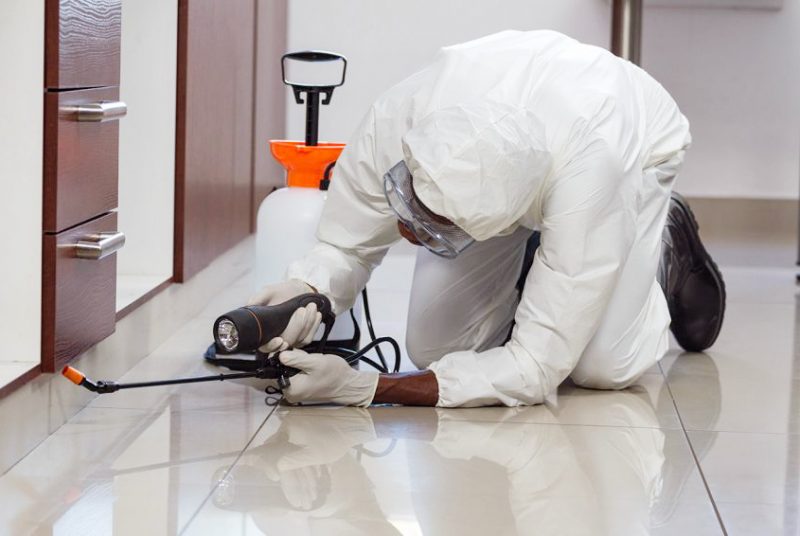
The need for pest control is evident from the damage done by pests in the past few years. Rodents and insects are carriers of various disease-causing pathogens. Many carry viruses and bacteria that can cause severe illnesses that would be very expensive to treat. They can infest your kitchen, bathroom or bedroom and even bite you or your pets.
Pest control is essential for the well-being of ecology and human health. They can cause devastating damage to properties and agricultural areas. There are different control methods available on the market depending on the type of pest wrecking havoc in your property or farm.
Pests like mice, cockroaches, and lizards make themselves comfortable in your home and multiply really fast before you know they are there. It only takes a few of them to start a colony. They multiply themselves within a few days and contaminate your belongings. It is, therefore, necessary to eradicate any pest in your home.
The primary purpose of using pest control methods in your home, office, garden or yard is to keep its occupants safe and healthy. They can contaminate your food and various daily-use items. Some pests can worsen existing medical conditions like asthma.
Different Types Of Pests
Pests belong to various subcategories of the animal kingdom. Some prominent examples of pests include spiders, rodents, and wasps. Each one of these categories requires a specific control approach.
Spiders
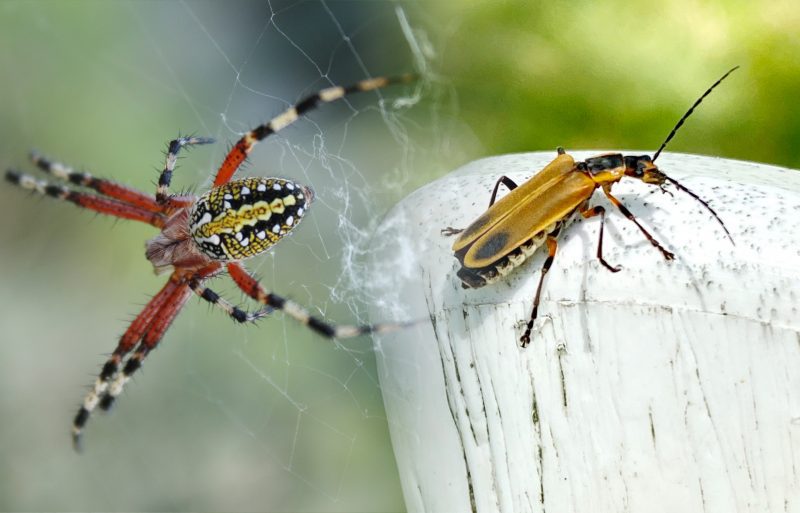
Certain spiders and bugs carry pathogens such as salmonella and E.coli, that can cause serious intestinal and urinary tract infection. The discarded body parts of these insects can also cause problems for people with lung problems. If you find one or two crawling or flying around in the house, it is not a big problem. It possible that you brought them home with you, unknowingly.
However, if you see a large number of them roaming around your kitchen, bathroom or other areas of the house, and you fail to get rid of them as soon as possible, they might get out of hand. This is often the first sign that an infestation is about to happen in your home. In this case, you need to call in an exterminator to help you get rid of all the pest in your house.
Rodents
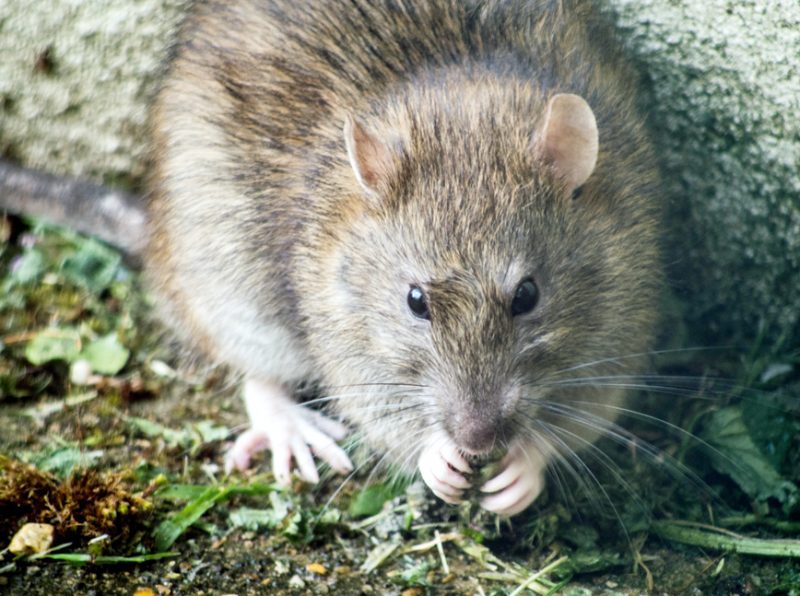
Rodents can cause severe damages to property. They are also known spread various viral and bacterial diseases. When the infestation is serious, they can leave traces of faeces in your food and other items.
If you eat food contaminated with droppings, you might get really sick. Rodent control is essential for safety.
Rodents like rats are carriers of the Hantavirus and bubonic plague. They also carry various other dangerous pathogens like salmonella. Rats can also cut electrical wires, and in some cases cause damage crops.
Rodents move a lot, and in the process, they gather fleas and other microscopic disease-causing agents. These animals should be kept as far away from your home as possible to ensure good health. You can contact an exterminator to help you control rats.
Wasps
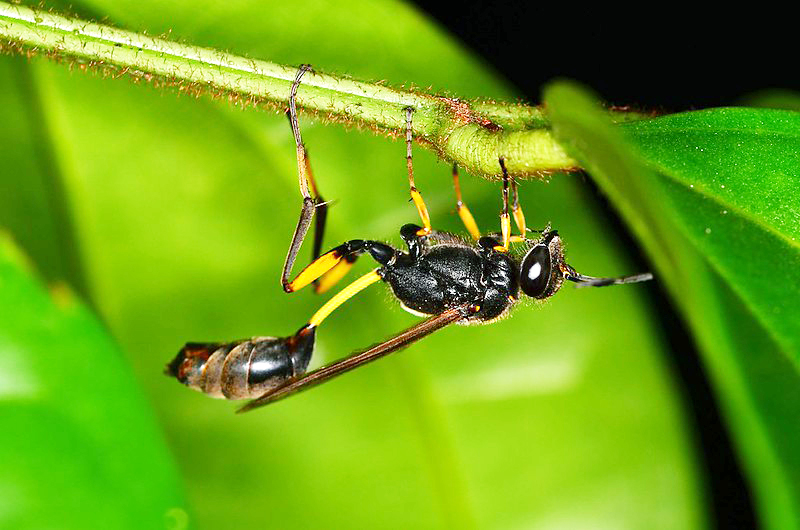
Wasps do not spread diseases, but they sting. The sting can be fatal to a person with a weak immunity. The viciousness and aggression of wasps is the reason they are categorized as insect pests. As such, they need to be controlled because an infestation would make your home inhabitable.
Wasps do not cause harm until you provoke them. When provoked, wasps sting multiple times. They are especially dangerous to people who are allergic to their sting. If a wasp or bee stings an allergic person, they can die within a few minutes. Therefore, it is essential to keep them away from your home. Make sure that you remove wasp nests or colonies as soon as you find them.
Methods Of Pest Control
The following are the most popular methods of pest control:
- Biological pest control
- Mechanical pest control
- Physical pest control
- Trap cropping
- Poisoned bait
- Field burning
- Use of pesticides
Ancient Methods Of Pest Control
Ancient Egyptians used pest-destroying animals to protect themselves from the ill effects of pests. For example, they used cats to control mice. This method is still used today to keep rats away from fields and houses. It is an excellent alternative to some expensive pest control methods.
Modern Methods Of Pest Control
Modern pest control techniques include the following:
Biological Pest Control
Biological methods of pest control are popular among exterminators because they are natural and quite effective. They can reduce the number of pests without causing side effects to the environment.
Biological control includes addition of certain pest-killing bacteria into water. This water can kill insects, but it is still safe for humans to drink. The primary purpose of using biological methods is to kill harmful species without impacting human health.
Mechanical Pest Control
Mechanical pest control methods include devices, machinery, and equipment to eliminate troublesome or harmful pests. The most common technique under this category, and one used a lot by farmers is creating a barrier between plants and the problems. This barrier acts as a protective layer that keeps pests out. This method is used in commercial pest control.
Mechanical pest control is quite similar to physical pest control. In this method, the pest managers attack pests prevent them from multiplying and spreading further. Thus, they help avoid further destruction of plants.
If you want to protect your property from unwanted invaders, your primary goal should be to remove that would encourage them to spread. Such things include heaps of garbage, standing water and other useless items.
Field Burning
Field burning is a traditional method of controlling the spread of pests. In this method, a field is burnt completely after harvest. This removes any remains or dead bodies of pests present at that place. This method also eliminates all pest eggs from the field, so there is no chance of harmful pests regrouping, multiplying and causing destruction. This type of pest control management is very efficient as it eliminates pests completely.
Trap Cropping
Trap cropping is a creative method of controlling pests. In this method, a plant is grown in the field and its job is to attract harmful pests towards itself distracting them from other valuable plants. Once the pests gather around the plant, it becomes easier for pest managers to control or kill them.
Pesticides
Integrated pest management is an effective and environmentally sensitive method of pest management. It involves a combination of logical and common-sense practices. This method uses data about the life cycles of pests and their interaction with the environment to control their spread.
It involves controlled use of pesticides, which is why it is considered one of the best examples of integrated pest management and control. Pesticides work best for controlling commercial pests at places where all other methods fail. The use of pesticides is common, and anyone can adopt it.
-
Rat Vs Mouse Comparisons And How To Manage Them
October 3, 2021
The sight of a rat or mouse in your home or office can be upsetting, to say the least. Bites,…
Table of Contents
The sight of a rat or mouse in your home or office can be upsetting, to say the least. Bites, disease, chewed-up properties are just a few of your concerns. What are the various rat vs. mouse comparisons? How do you tell them apart and manage them? This article will answer these questions and consider their standard features, eating habits, signs, prevention, and management.
Species Of Rodents
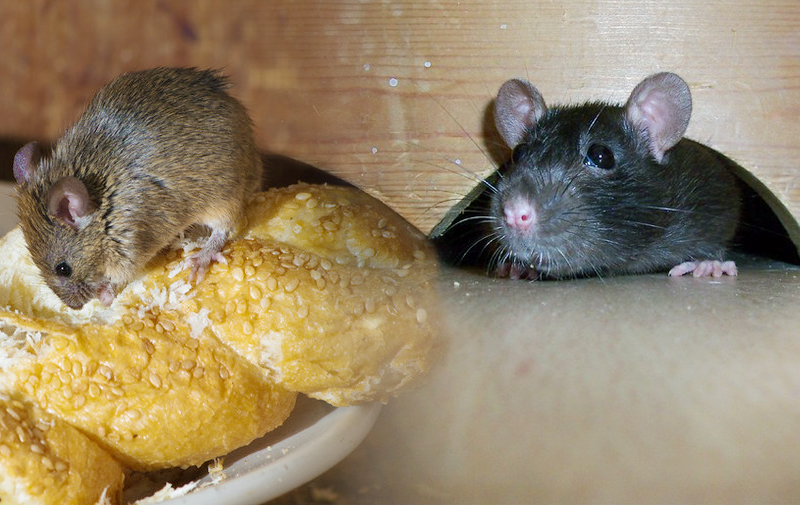
Generally, for your home, you may consider two types of rodents — the rat and mouse. More specifically, three species of rodents quickly adapt to the human environment. First, the Brown Rat (Rattus norvegicus) is also named Common or Norway rat. The Norway rat usually prefers living in homes and businesses. They are bigger in size than black rats.
Second, the Black Rat (Rattus rattus) is further known as the Ship or Roof rat. No surprise, ships may include the black rat as a pest-controlled item in their reports, as it is a common pest. Finally, the House Mouse (Mus domesticus) is common in many homes.
Common Features Of Rodents
Whatever the species you are considering for rodent control, they all have standard features like short legs and long tails. Furthermore, they have a pair of incisor teeth in their upper jaw. Nonetheless, a closer look will tell the difference between mice and rats using identifiable features for each species.
What Is The Difference Between A Rat And A Mouse?
You may be forgiven for mixing up the two. Aside from behaviour differences, rats and mice do look similar. However, people use their sizes to differentiate them. Rats tend to be bigger and heavier. This includes their tail length.
On the other hand, mice tend to have slender bodies. Furthermore, mouse tails are hairy, long, and thin, while rats have shorter, thicker, and hairless tails. Moreover, you can use the more significant amount of droppings present during the day to differentiate the mice from rats.
Rat Vs. Mouse – Differences In Looks
Indeed, with a body size of 3-10 cm long, house mice are smaller than the rat. After all, the body length of a rat is 16-40 cm. Furthermore, a mature mouse has more prominent ears and a longer tail in proportion to its body length. You can use the length of an adult mouse tail to differentiate it from a young rat tail.
In addition, rat heads and feet are proportionately more prominent than its body in comparison to the mouse. Distinctively, mice generally have a light grey or brown colour with a lighter shade in their bellies.
Features of Brown Rats
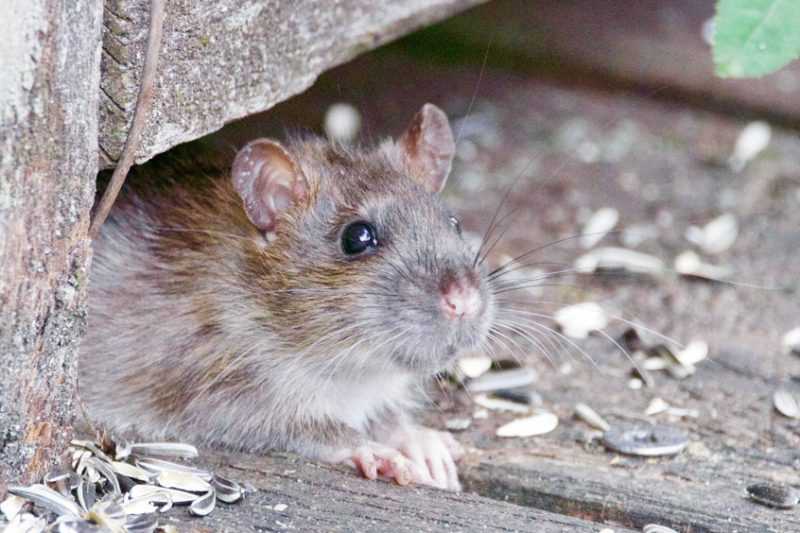
The brown rat has a thicker body, blunt nose, and small hairy ears. In addition, it has a tail that is shorter than the length of its head and body combined. Typically, it has a paler colour underneath its tail.
Features of Black Rats
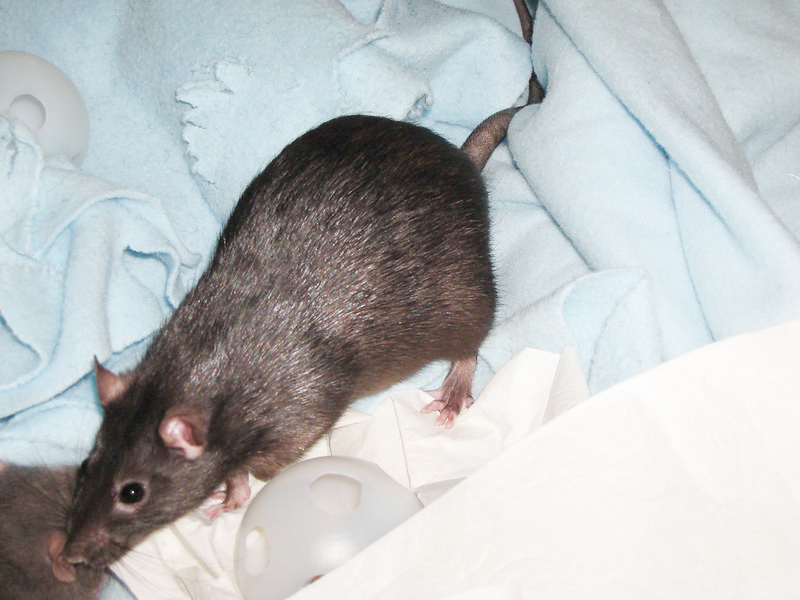
However, the black rat is characterised by its slender body, pointed nose, and large thin ears. In the same vein, its tail is longer than its head and body.
Features of Mice
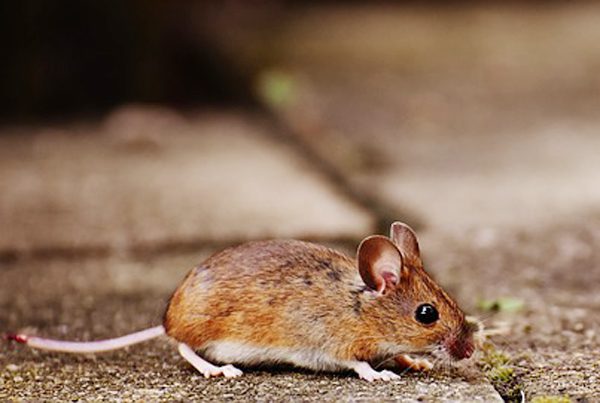
Typically, mice have a pointed, triangular snout. Likewise, they have larger ears and smaller heads. In addition, they can be black, grey, or light brown. As mentioned earlier, mice have long, thin, and hairy tails.
Where Do Rats And Mice Live?
Habitats of Brown Rats
You can usually find brown rats in buildings and outdoors. They are active on the ground and in burrows. Furthermore, brown rats can cause severe damage to sewer systems. Characteristically, you can identify its travel routes using the continuous smudges caused by its oily fur.
Where Do Black Rats Live?
In contrast, black rats can be found in buildings close to ports and ships in temperate countries. Little wonder they are called ‘ship rats’. Thus, these agile climbers build their nests high up under roofs. As such, you may find them in the upper levels of a home or office building.
Where Do Mice Live?
Alternatively, mice typically live on the ground. They also nest in burrows. Keep in mind that it is also agile and can climb. However, the mouse has a smaller footprint than a rat.
Rat And Mice Eating Habits
Both rodents are omnivorous. A rat will eat anything. However, the various species have their preferences. For example, black rats like fruit and foods containing a high moisture content. On the other hand, the brown rat and house mouse prefer cereals.
Eating Habits of Brown Rats
They like cereals and drink up to 60ml water a day. Interestingly, brown rats cut their grain when eating. This gives the grain a chopped appearance. They are likely to seek their food in the same areas.
Eating Habits of Black Rats
Similarly speaking, black rats are less likely to eat from the same area two nights in a row. This makes controlling them more difficult. They drink up to 30ml of water a day.
Eating Habits of Mice
Though mice eat grains, fruits, and seeds, they prefer cereals. The mice will often piece out the grain. It removes the outer husk to eat the white endosperm inside. Moreover, it is likely to seek its food source in the same places. Do they drink water? No, they do not need to but, if water is available, they can drink up to 3ml.
Droppings Of Rats Vs. Mice
Though you may often confuse their droppings, the droppings of the three rodents differ. These differences between rats and mice poop are in size and shape.
Brown Rat Droppings
If the droppings have a tapered spindle shape that resembles a large grain of rice, it is usually that of a brown rat. In addition, the droppings are wide and of a dark brown colour.
Black Rat Droppings
The black rat’s droppings are smaller than those of the brown rat. Furthermore, they are long and thin. You can check for its banana-like shape and pointed ends.
Mouse Droppings
However, mouse droppings have a granular shape and a black colour. With approximate lengths of 3-8 mm, they are often found near nesting areas. Furthermore, they are scattered randomly, especially during an infestation.
Breeding Of Rats Vs Mice
Rodents all have a similar lifespan of up to thirty months. However, mice get sexually mature earlier than rats. Similarly, they produce larger litters more frequently. However, all three rodents have newborns that are blind, hairless, and dependent on their mothers when they are born.
House Mouse
The house mouse can produce around 7-8 litters per year. Each litter size is between 4-16 newborns and the maturity period is 8-12 weeks.
Brown Rat
Likewise, the brown rat produces 3-6 litters in a year. The litter size is 7-8 babies and the time to maturity is around 10-12 weeks.
Black Rat
However, the black rat can produce up to 3-6 litters per year. The time to maturity is 7-8 weeks.
How To Tell If You Have A Rat Or Mouse In Your Home
The following are a few tell-tale signs.
Signs of a Brown Rat’s Presence
You can use the following signs mentioned below to identify the presence of the Norway rat in your home.
- A strong, musty odour or urine smell
- Dark 3/4″ droppings that have blunt ends
- You may see gnawing marks on wall corners, wall studs, and floor joists
Signs of a Black Rat’s Presence
The black rat also has a strong, musty odour as well as a urine stink. However, the droppings are dark, measuring 1/2″ with pointed ends.
You are likely to find gnawed wires in ceilings, walls, or upper floors. Similarly, bite marks will be present on wall corners, wall studs, floor joists, and wood structures.
Signs of House Mouse Presence
For the house mouse, watch out for the usual urine odour and strong, musty smell. Secondly, there are likely to be gnawing marks on plastic, wood, wires, cardboard, and food containers.
Similarly, expect to find your books or paper towels shredded and used for their nests. Moreover, their dark droppings measure 1/4″ and have pointed ends.
Effects Of Rats And Mice In The Home
Any rat vs. mouse comparison you do, you will have to factor in their adverse health effects. This emphasises the importance of preventing their access to your home.
For instance, they transfer several diseases to humans. These diseases include Plague, Leptospirosis, Salmonellosis, and Tularemia. Again, both rats and mice may trigger allergies and asthma in certain people.
How Rats Vs. Mice Spread Diseases
Rats and mice spread diseases in the following ways.
- They contaminate your food and drinks
- Like bugs bite, a bite by a rat or mouse can cause disease
- Through contact with their urine or faeces
- By breathing airborne droppings
- Moreover, do you remember those vector organisms you were taught in school? Yes, rodents like mice and rats carry vectors such as the bed bug, ticks, and fleas that spread diseases.
A Complex Infestation Problem
When you consider the breeding rates of a mouse vs. rat, you would realise how easily an infestation can grow. For example, statistics show that a pair of breeding rats can produce up to 15,000 pups within one year!
Imagine how complicated it would be to control such a population of rats or mice.
Financial Costs
You may not have just your cash literally eaten; rats and mice can incur other costs. You may have to repair walls and attic insulation that they chew through. Besides, chewed electrical wiring poses a fire risk.
Tips On How To Remove Rats And Mice
The following are some steps to take to get rid of mice or rats in your home.
Check for Signs of Mice or Rats
These signs can be found as gaps or holes in your home. Go ahead and examine the fireplace, around doors and windows, pipes, and vents. Also, check under cabinets and appliances, attics, basements, and crawlspaces. Remember to check your roof, gables, eaves, and floor drains.
Fill in Entry Holes
Next, use caulk and steel wool to fill in small holes. Alternatively, use metal, cement, metal sheeting, or lath screen to fill in larger gaps.
Carefully Set Up Traps Around the House
Depending on your control plan, your traps must be specific to the mouse or rat. Such traps can be placed in the right areas inside the home and outbuildings.
Practice Preventive Measures for Health Safety
Store your food in plastic or metal containers. Wash your dishes after use. Similarly, clean up spills immediately. Furthermore, ensure you make use of metal or plastic trash cans with tight lids. You should empty your trash frequently and regularly.
Make Use of Botanical Repellants
There are botanical repellants that are offensive to rodents. Some of them are made of herbal ingredients such as lavender oil and other plant extracts. Ultimately, they give off an awful smell that puts off mice and rats but not humans.
Contact a Professional Pest Control Company
Such pest control companies can solve a wide variety of rodent problems. Begin by checking their pest library. Their repertoire of expertise can include termite protection, termite control, ant control, bird control, rodent control, moth control, and tick control. It could also include mosquito control, cockroach control, spider control, fly control, and bed bug control.
Furthermore, you may find they can help with termite treatments, flea treatments, and bedbug treatments, to name only a few. Moreover, they can help you manage carpenter ants and help with wasp removal, bed bug removal, or even possum removal.
Usually, they will first evaluate your home. After that, they will suggest appropriate up-to-date treatment options for your pest management problems. In addition, they can implement prevention plans.
When To Invite A Pest Control Company?
The sight of rodents in your home should not terrify you, at least, not too much. First, understand various rat vs. mouse comparisons, for instance, how to tell them apart and manage them. After all, knowledge is power, or at least, the beginning of it. Clearly, the best option, especially if it is an infestation, is to invite a professional pest control company.
-
How To Get Rid Of Ants
October 3, 2021
Ants are a natural nuisance; they are always there but more active during spring and summer. There are different species…
Table of Contents
Ants are a natural nuisance; they are always there but more active during spring and summer. There are different species of ants in Australia including the garden ants, green ants, bull ants, coastal brown ants, and fire ants.
Perhaps you have been wondering what caused an ant invasion in your house; this post will answer that question and provide some practical methods to get rid of ants from your home.
What Are The Causes Of Ant Invasions?
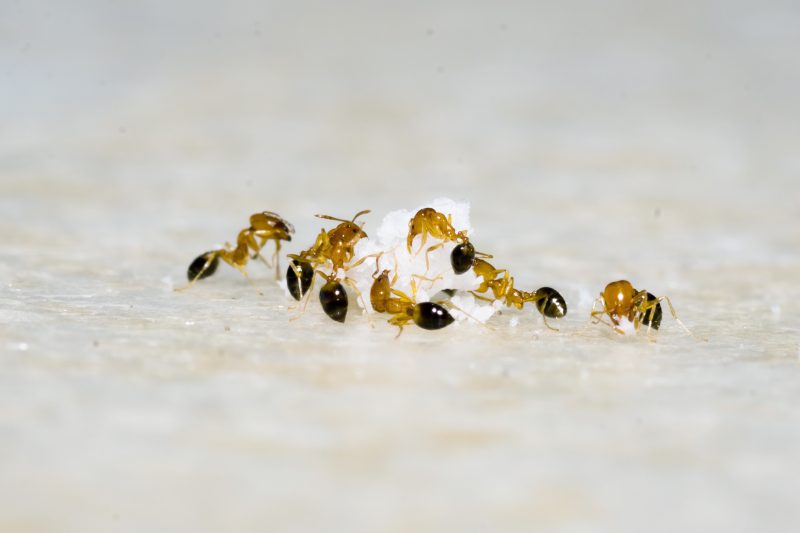
Food
Ants are always on the lookout for food to scavenge, and once they find some, they signal the rest of the colony. So, if you see one ant, that may not be the first or last!
Moisture
Ants can survive on little to no water, and they get most of their requirements from the food they eat. However, some ant species love moist wood, which makes them live near cabinets or sinks if there is a leak in your plumbing system.
Conducive Environment
Ants are typically found outside of your home since they need the environment to regulate their body temperature. They can, however, colonise in areas with cracks or crevices. If you have any windows that might let this occur, no doubt ants will enter you home.
How To Get Rid Of Indoor Ants
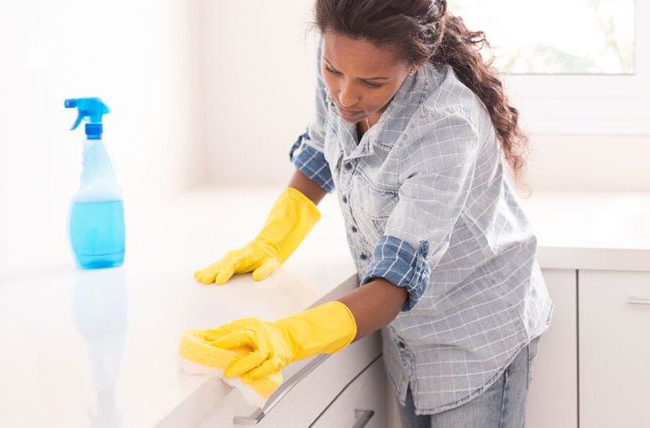
Know their Source
To evict ants from your kitchen, start by looking for their source. If it is sticky honey or stray spoons in dirty dishes left on their own, then you know where to begin cleaning up.
The next step will be figuring out how best to get rid of them once you’ve found what makes these poor tenants feel welcome. Once you remove their source, they’ll likely move elsewhere themselves.
Stop their Trail
Ants rely on pheromones to communicate and following one another. To stop the tiny trails from being seen, you need to spray them with something that will break up their scent signal before they leave it behind – like vinegar mixed in the water!
Simply take some crushed white wine bottle (or any clear household cleaner), add 1 part liquid per 3 parts drinking vinegar at room temperature, until the color lightens slightly; then simply mist this mixture anywhere ants are spotted so they cannot use each other’s trail anymore.
Set Up Ant Repellent
To exterminate ants naturally, mix peppermint or lavender oil (two scents they hate) with water and spray the mixture on entry points like window sills. If you decide to take the chemical route, look for a product that contains boric acid; however, some can be harmful if misapplied, so read the instructions carefully!
How To Get Rid Of Outdoor Ants
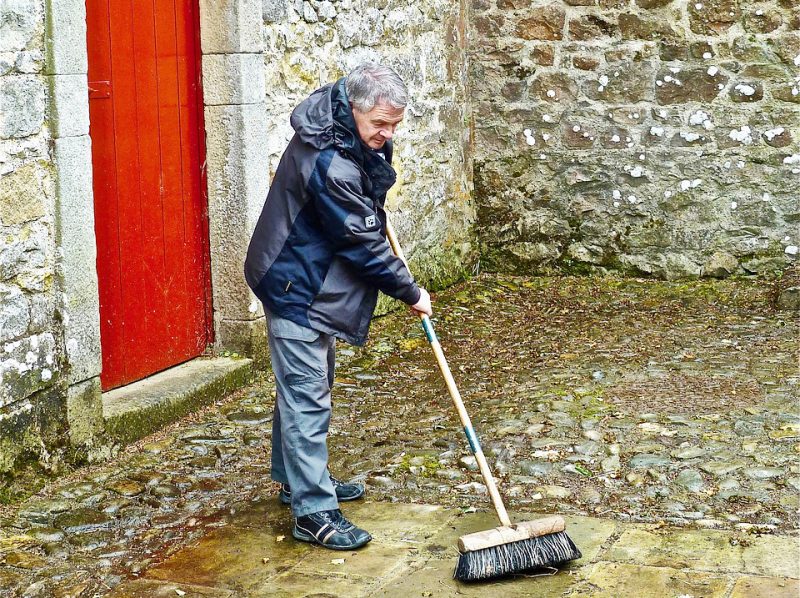
Search Around your House
Carpenter ants like to nest in wood, so if you find ant beds around your yard or near any outdoor structures such as foundation piles for homes, they may have been there for a while. They also prefer wet and damaged pieces of lumber; check tree stumps and other places where this kind of condition might exist!
Use Hot Water
Ants are pesky pests and can be difficult to get rid of. Once you’ve found their hive, pour boiling water into the hill.
Keep your Surroundings Clean
A well-maintained property is the best way to keep ants away. Keep an eye out for potential entry points such as branches and bushes touching your house, which these pests can use to sneak into your home.
How To Keep Ants Away From Your House
Clean your Home Always
Your kitchen is typically an ant’s favourite room in the house, so pay special attention to it. Keep your countertops clean and free from crumbs because they are often targeted by these little insects as well.
Regularly wipe down any surfaces that might serve as prey for ants, especially during warmer months when bug populations may increase due to more food sources around like fruit bowl edges or pantries which have not been properly cleaned.
Regularly Check your AC, Pipes, and Sinks
You should check your pipes and sinks regularly to make sure there are no leaks. You can also check air conditioning units and anything else that may create moisture in the home or office space you work in, which will attract ants.
Close the Windows and Doors
Seal up your windows and doors this spring to keep out more than just ants. Remember that it’s tough during warm weather, especially with kids running around all day long! Try keeping them closed as much as possible while still letting your kids enjoy their playtime outside.
What Are The Fastest Ways To Get Rid Of Ants?
Controlling ants is a challenge, but it can be overcome with some thoughtful preparation. One of the most critical steps in controlling these pests from raiding your home and kitchen items is proper food storage procedures such as taping closed boxes or bags containing perishable goods like cookies before putting them away for long periods.
The best way to keep ants from raiding your pantry is by purchasing airtight containers. Lids should lock tightly, preventing scavengers from gaining access and providing a haven for bugs scavenging on the outside like they always do! After every use, wash off all residue with hot water or bleach (start light). This will ensure that there’s nothing left behind that the ants could be used as food sources.
Do Over-The-Counter Ant Repellents Work?
Ant control products like those found at your local hardware store come in many forms. However, it’s important to remember these substances may be harmful if the product label directions are not followed and will only solve a small portion of your ant invasion.
Sprays only work on the ants you can see; they function only as a deterrent because they pose no residual effects capable of providing a lasting solution to your ant problem. If the ants can enter your building, the spray will not hinder what they can do. Again, remember that the spray doesn’t affect the colonies outside of your house. Therefore, so long as the colonies are still intact, the supply of ants is unlimited.
If you find a colony of ants in your home, it’s essential to take steps before they multiply. Most ant treatments only work if applied directly on the colonies, so there is no easy way for the average homeowner to get rid of them without professional help from an expert pest control company. Pest Aid can help you eliminate the ant colonies in your house and give you a permanent solution to your ant invasion problem.
Why Do Some Ant Colonies Survive After Treatment?
Ant colonies can survive if the pest treatment was not properly administered. Again, the colonies may survive just because the queen survives. You have to know that ant problems do not start in your home; instead, they start in the nest, and you only notice them when they invade your home.
Some people believe that the more ants they see, the more the chances of breeding, but that is not true. The only ant that breeds is the queen mother. As long as she wasn’t killed during the ant treatment process, she can produce more than enough ants to invade your home because the more she makes them, the more they look for food, and your kitchen and other parts of your house will be their closest choice.
To make the matter worse, the queen never leaves the ant nest after establishing her colony, so there is no chance that she will be killed with other ants in the kitchen or other places in your house.
She brings worker ants from the colony to feed her young, which she populates constantly. The workers you see in your house are nothing more than those created by this clever ant queen; other types exist too, like soldiers and drones for protecting their territory or mate-seeking missions outside of it, even if they’re not at home! It’s impossible to get rid of an entire ant nest without killing the ant that is the source of other ants, and that is the queen herself.
This is why you need the services of a reputable ant control company, who have the experience not just to get rid of your house of ants. Still, they also go the extra mile of detecting the colonies of these ants near you, destroying the them, and making sure the queen mother is not there to revive the ant population.
You May Need Help To Get Rid Of Ants
Getting rid of ants by oneself can be a huge challenge. If you have tried all you can to get rid of them and they are still appearing, it is better to consult an expert. There are many companies around who specialise in getting rid of ants.
You may have to consult them to help you in eliminating ants completely from your house. They will carry out a proper inspection to identify the source of the ants which is the colonies, destroy these colonies and eliminate the queen mother, thereby ensuring that no new ants are introduced into your home.
